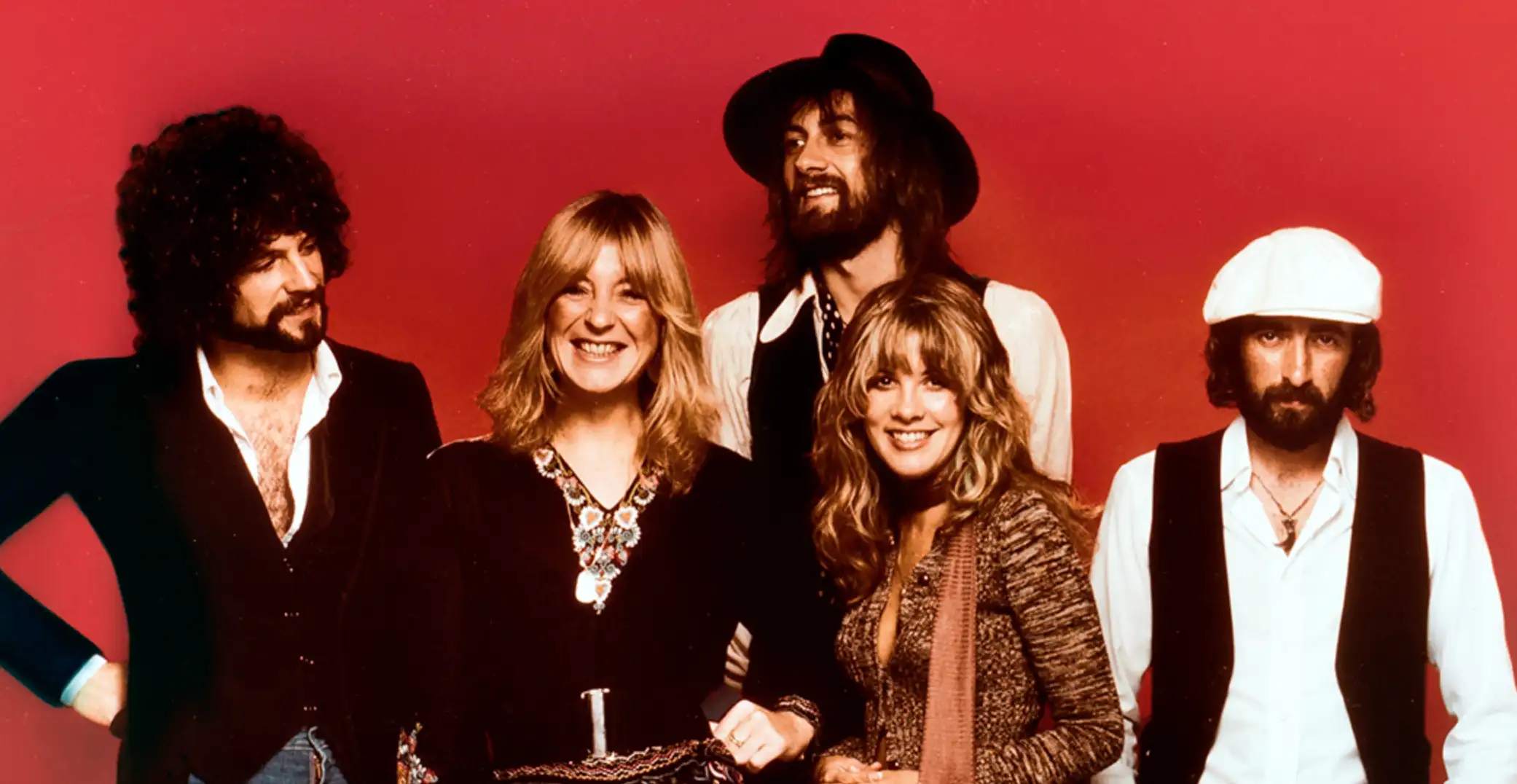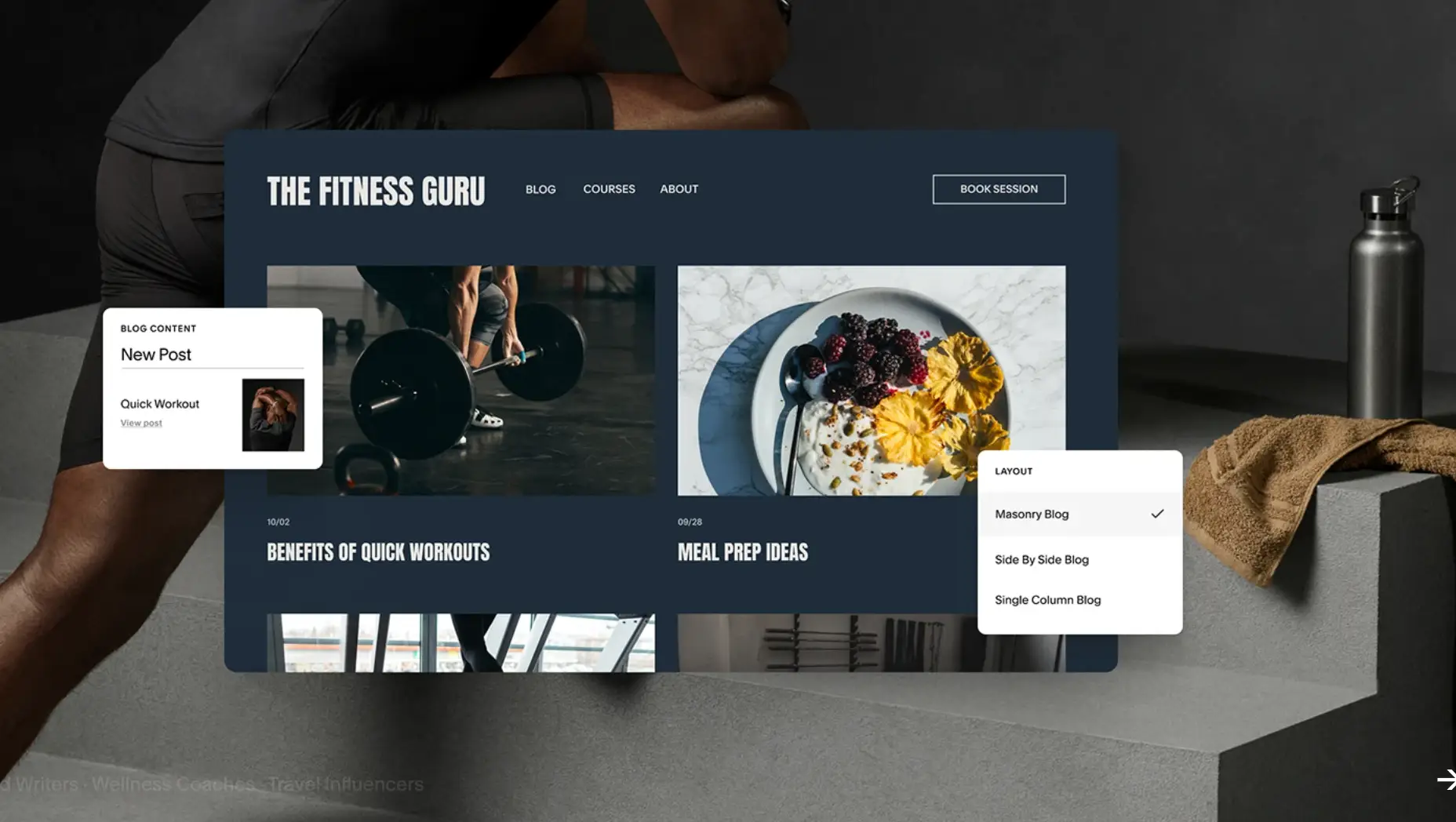Mercedes‑Benz Marketing Strategies: A Comprehensive 2025 Analysis
Updated on
Published on
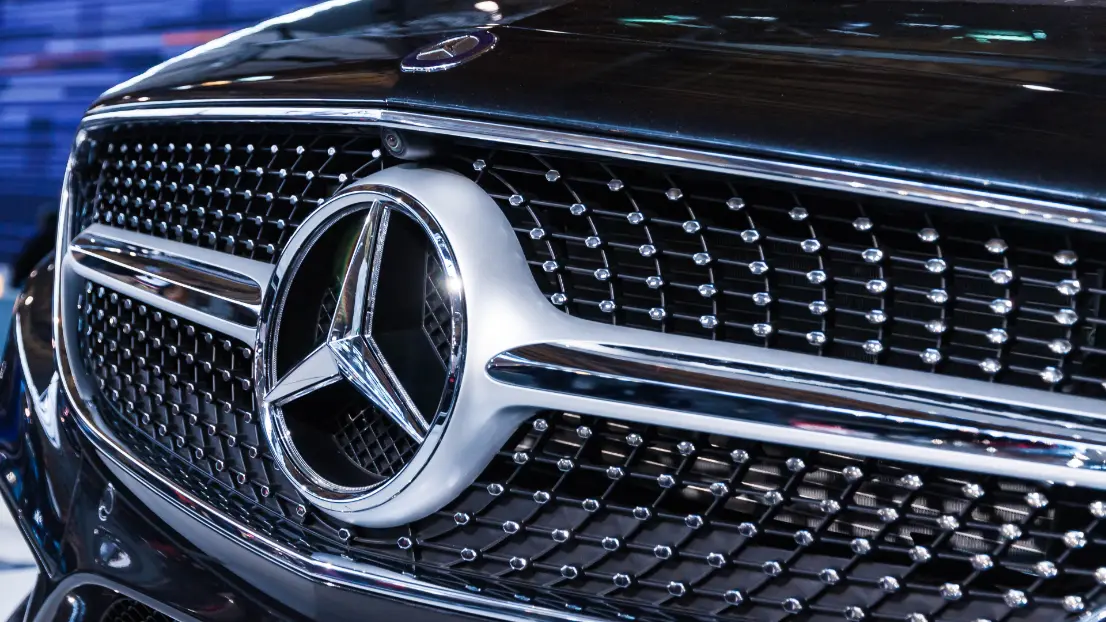
Few brands in the automotive world evoke the same prestige and engineering mystique as Mercedes‑Benz. Founded in the 1920s through the union of Daimler Motoren Gesellschaft and Benz & Cie, the company has built a century‑long legacy around durability, innovation and luxury. Today Mercedes‑Benz remains synonymous with quality and aspiration, from its high‑tech sedans and SUVs to its championship‑winning Formula 1 team. This article offers a refreshed, SEO‑optimised look at the history, present‑day operations and marketing strategies that keep Mercedes at the forefront of the global automotive conversation. We’ll explore how the brand has evolved from its 1920s roots to the digital and electric era, examine the latest campaigns and innovations up to 2025, and provide a succinct SWOT analysis.
At-a-Glance: Recent Facts and Highlights
- Birth of a Legend: Mercedes-Benz emerged in 1926 when Daimler Motoren Gesellschaft merged with Benz & Cie and agreed to use the “Mercedes-Benz” brand name.
- Market Muscle: China is still Mercedes-Benz’s largest market, accounting for 37 % of global sales in 2021.
- Innovation Pioneers: Mercedes introduced seat-belt pretensioners, airbags and automatic braking systems ahead of many competitors.
- Massive R&D Investment: In 2023 the company invested around €7 billion in research and development, leading to innovations such as the MBUX infotainment system, which adapts to drivers’ habits, and DRIVE PILOT, a semi-autonomous driving system.
- Digital Sales Growth: Mercedes reported a 30 % increase in online financing applications in 2022, showing that digital sales channels are opening access to more customers.
- Electric Ambition: Parent company Daimler announced a $11 billion investment to ensure every model would offer an electric or hybrid variant by 2022; the first dedicated EV platform (MB.EA) is set to debut in 2025.
- Formula 1 Shift: After eight years of dominance, Mercedes’ F1 team struggled under new regulations. They finished third in 2022, with George Russell taking the team’s sole win; second in 2023 despite not winning a race; and fourth overall in 2024, even though both Lewis Hamilton and George Russell secured two wins each. 2024 also brought the shock announcement that Hamilton will move to Ferrari in 2025.
- Signature Campaigns: New marketing initiatives include “Defining Class since 1886” (2024) featuring actor Matthew Macfadyen, youth-oriented social-media collaborations with influencers like Luis Freitag to promote the electric EQA, and music-driven ads such as “Blinding Lights” with The Weeknd to launch the EQC electric SUV.

Mercedes-Benz, a German automotive giant, has not merely created cars; it has crafted a legacy. Founded in 1926, the brand emerged from the merger of Daimler Motoren Gesellschaft and Benz & Cie, laying the foundation for a journey that would redefine the automotive landscape. From its inception, Mercedes-Benz set itself apart by prioritizing durability, technological prowess, and a commitment to luxury. Mercedes-Benz's significance transcends mere automotive prowess; it represents a paradigm shift in the industry. The brand has consistently set benchmarks, pushing the boundaries of what is possible in vehicle design, safety, and performance. Its influence extends beyond luxury, impacting the entire automotive ecosystem, inspiring competitors to reach new heights and shaping consumer expectations.
Historical Background
Mercedes‑Benz traces its lineage to the separate innovations of GottliebDaimler, WilhelmMaybach and KarlBenz. Daimler and Maybach established Daimler Motoren Gesellschaft, while Benz founded Benz & Cie. In 1926 these firms merged to form Daimler‑Benz AG and adopted the Mercedes‑Benz marque. This partnership combined resources and technologies to create a company that has since set industry benchmarks in engineering, safety and luxury.
Mercedes-Benz Today
Under the umbrella of Mercedes‑Benz Group AG, the brand has expanded into a broad portfolio catering to various markets. China remains its biggest market, accounting for 37 % of total sales in 2021, and the brand continues to grow in North America, Europe and the Asia‑Pacific region. Within its product family, Mercedes‑Maybach targets the ultra‑luxury segment, Mercedes‑AMG offers high‑performance vehicles, and Smart supplies compact urban mobility solutions. This segmentation ensures Mercedes‑Benz stays relevant across demographics and price points.
The company’s focus on electrification is intensifying. Daimler’s multi‑billion‑euro investment aims to deliver an electric or hybrid variant of every model by 2022, and new EV platforms like MB.EA (cars), AMG.EA (performance) and VAN.EA (vans) are scheduled to debut from 2025 onward. At the same time, Mercedes is pursuing digital innovation; the MBUX infotainment system offers voice‑activated control and personalization, while DRIVE PILOT introduces Level 3 automated driving in limited conditions.

Mercedes in Formula 1: A Strategic Triumph on and off the Track
Formula 1, the pinnacle of motorsport, has long been a battleground where cutting-edge technology, skilled drivers, and strategic prowess converge. For Mercedes-Benz, the decision to enter and dominate this high-stakes arena has proven to be a masterstroke, not just in terms of on-track success but as a shrewd marketing strategy that reverberates far beyond the race circuits.
A Record Run and Recent Struggles
Mercedes‑AMG Petronas enjoyed unprecedented success in the turbo‑hybrid era, securing seven consecutive Drivers’ Championships (2014‑2020) and eight consecutive Constructors’ Championships (2014‑2021). However, the introduction of new technical regulations in 2022 changed the competitive landscape.The team’s W13 car struggled with porpoising and lacked pace; newcomer George Russell delivered the team’s only win and outscored Lewis Hamilton, who went winless for the first time. In 2023 the W14 showed incremental progress but failed to secure a race victory, though development allowed Mercedes to finish second in the Constructors’ standings. By 2024 the W15 achieved two wins each for Hamilton and Russell but the team slipped to fourth overall, and Mercedes announced that Hamilton would depart for Ferrari in 2025.
Marketing Impact and the Netflix Effect
Mercedes’ Formula1 involvement goes beyond sporting success—it serves as a global marketing platform. Each race showcases the brand’s commitment to precision and innovation, while the Netflix docuseries “Drive to Survive” humanises drivers and team personnel, broadening the fan base.The synergy between F1 and road‑car development is particularly salient now: hybrid technologies pioneered on the racetrack inform Mercedes’ consumer EV strategy, and the team’s recent challenges underscore the brand’s ability to adapt and rebuild.
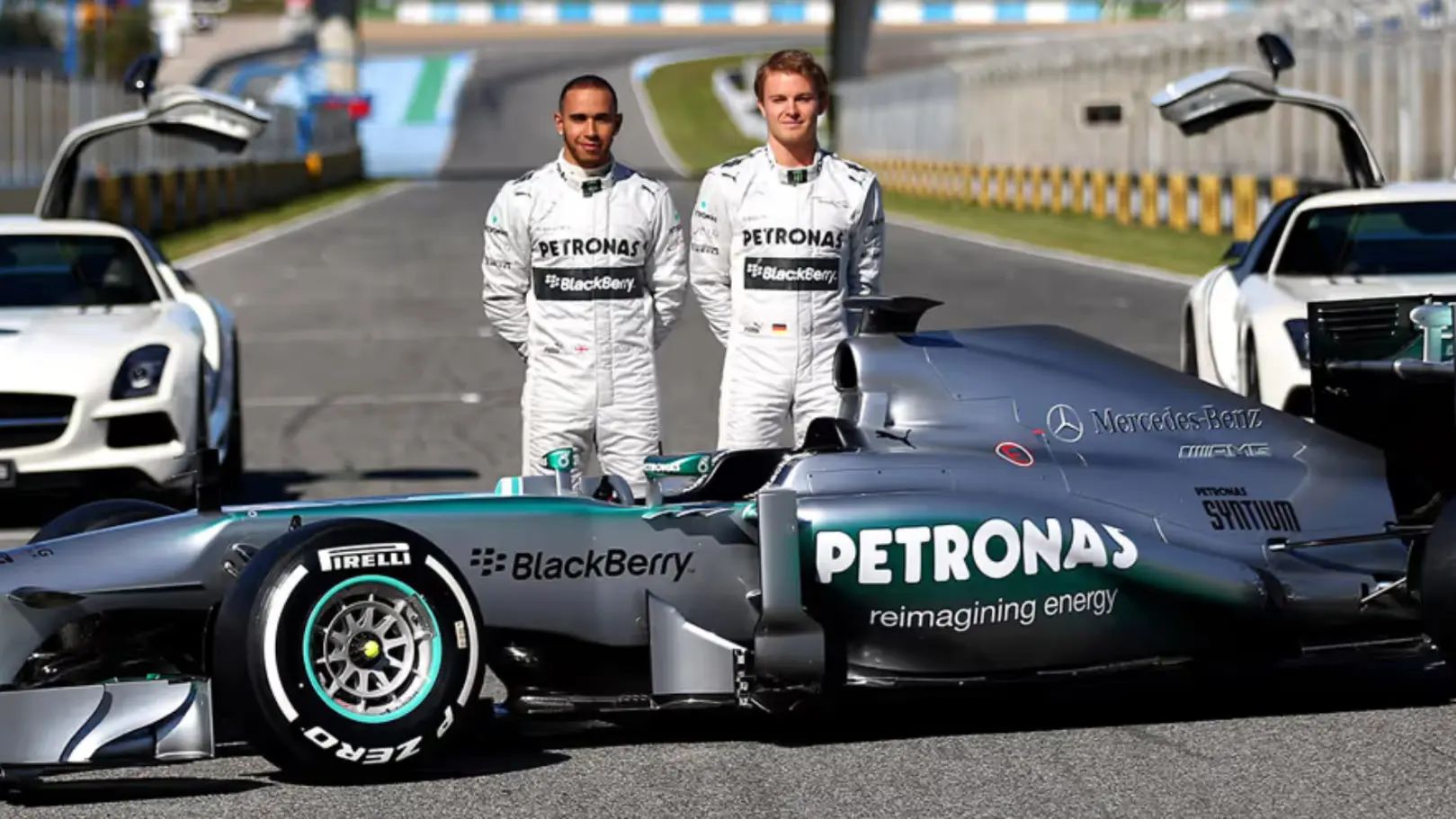
Evolving Marketing Mix: Innovation Meets Lifestyle
Product Strategy
Mercedes‑Benz emphasises quality and advanced technology across its range.Safety innovations like seat‑belt pretensioners, airbags and automatic braking systems set industry standards.The company’s diverse product line includes luxury sedans (S‑Class, E‑Class), SUVs (GLS, GLC), coupes, convertibles, sports cars and commercial vehicles.Concept vehicles such as the F 015 Visionary illustrate a vision for autonomous luxury. The brand’s investment in R&D, about €7 billion in 2023—has yielded the MBUX in‑car assistant and DRIVE PILOT semi‑autonomous system.
Pricing Strategy
Mercedes uses value‑based pricing: customers pay a premium reflecting craftsmanship, technology and status.High‑margin flagship models command six‑figure sums, while entry‑level cars and subscription‑based features (e.g., upgrades unlocked via software) broaden access.The growth of online financing, 30 % more applications in 2022 shows that flexible payment options are expanding the brand’s reach.
Place and Distribution
A global network of more than 6,500 dealerships across 130 countries ensures that Mercedes vehicles are accessible worldwide. Prime locations, such as BeverlyHills and Fifth Avenue, underscore the brand’s luxury ethos, while digital platforms allow customers to configure and order vehicles online.Manufacturing plants in Europe, Asia and the Americas allow Mercedes to localise production and adapt to regional markets.
Promotion: Heritage Meets Digital
Mercedes combines traditional channels—TV, print and outdoor advertising—with digital and experiential campaigns. Recent efforts include:
- “Defining Class since 1886” (2024): A global campaign featuring actor Matthew Macfadyen that invites viewers to reconsider what defines a car; the ad emphasises Mercedes’ blend of heritage, innovative technology and luxury.
- Influencer Collaborations: Mercedes engages younger audiences through TikTok and Instagram. Videos like “137 Years of Class” show college students embracing the brand, while partnerships with influencer Luis Freitag and the Elevator Boys promote the electric EQA and signal that electric Mercedes vehicles are not just for nature‑conscious adults.
- Music‑Driven Adverts: The “Blinding Lights” campaign (2020–2021) used singer The Weeknd to launch the EQC electric SUV, blending nostalgia with contemporary pop culture.
- Other Digital Initiatives: TikTok videos, AI‑generated teasers and creative social‑media content showcase features like MBUX, remote parking via Mercedes Me and the concept of in‑car streaming.
These campaigns demonstrate how Mercedes pairs its heritage (“The Best or Nothing”) with modern storytelling to engage both older luxury buyers and younger, tech‑savvy audiences.
Memorable Campaigns and Customer Engagement
“Unlock With Mercedes-Benz” (2021)
Launched as pandemic restrictions eased, this campaign positioned Mercedes as a partner in unlocking new journeys.Empathetic messaging and attractive financing encouraged consumers to explore driving freedom again.
“Merc From Home” (2020)
This digital initiative allowed customers to buy vehicles online—an early response to pandemic‑driven retail disruption.The success of the platform set a standard for digital car sales that continues to grow (as reflected by the 30% increase in online financing applications in 2022).
“Life Gets Big”
Designed to launch the T‑Class van, this campaign highlighted spacious interiors and family‑friendly versatility.It emphasised Mercedes’ ability to cater to growing families without sacrificing luxury.
Ongoing Lifestyle & EV Campaigns
Beyond the campaigns above, Mercedes runs lifestyle‑oriented ads to promote new electric models and emphasise sustainability.For example, short films on social media highlight the convenience of at‑home charging and the fun of driving electric Mercedes vehicles, while partnerships with musicians and influencers showcase EVs as aspirational products.
The Impact of "Drive to Survive" on Mercedes-Benz Marketing:
Unprecedented Access:
Netflix's documentary provides unprecedented access to the inner workings of Formula 1 teams, drivers, and key personalities. For the Mercedes-AMG Petronas Formula One Team, this means showcasing the meticulous engineering, strategic brilliance, and human stories that unfold within the team. The result is an intimate portrayal of the high-stakes world of Formula 1 that resonates with both dedicated fans and a broader audience.
Humanizing the brand:
While the roar of engines and the pursuit of victory are integral to Formula 1, "Drive to Survive" introduces a human element to the narrative. It delves into the personalities, conflicts, and emotions behind the scenes, painting a richer picture of the sport. For Mercedes, this humanization extends to the portrayal of Lewis Hamilton, offering a glimpse into the life of a global icon and the team dynamics that drive success.
Expanding the Fan Base:
The documentary's availability on a widely accessible platform like Netflix brings Formula 1 to a broader audience. Viewers who may not have been avid motorsport enthusiasts are now exposed to the thrill, drama, and intricacies of Formula 1. As a result, Mercedes-Benz marketing benefits from an expanded and diversified fan base, reaching individuals who might not have engaged with the brand through traditional racing channels.
Brand Storytelling Beyond the Track:
"Drive to Survive" goes beyond the race weekends, exploring the stories that unfold between races. This storytelling approach aligns with Mercedes' broader marketing strategy, which emphasizes brand narratives that go beyond technical specifications. The documentary becomes a medium through which Mercedes can narrate its own story, emphasizing innovation, resilience, and the pursuit of excellence.
Creating Emotional Connections:
Emotional connections with a brand often stem from relatable stories and authentic portrayals. "Drive to Survive" captures the highs and lows of Formula 1, the triumphs and tribulations, fostering emotional connections between the audience and the teams. For Mercedes, this emotional resonance translates into a more profound and enduring connection with consumers who see the brand as not just a manufacturer but a participant in a grand and unpredictable narrative.
The Mercedes-Netflix Synergy:
Mercedes-Benz's collaboration with Netflix's Formula 1 documentary series exemplifies the modern intersection of sports, entertainment, and marketing. The synergy between high-stakes racing and binge-worthy storytelling contributes to the brand's overarching narrative of performance, innovation, and global excellence.
As viewers binge-watch the trials and triumphs of Mercedes-AMG Petronas Formula One Team on Netflix, the Silver Arrows imprint themselves not just on the racetrack but in the hearts and minds of a diverse and engaged audience. The unexpected marketing vehicle of a documentary series becomes a strategic asset, reinforcing Mercedes marketing position not only as a dominant force in Formula 1 but as a brand that transcends the confines of traditional advertising.
Key Brands Under Mercedes-Benz Group

Mercedes-Benz Group AG encompasses a spectrum of brands, each with a unique identity and market positioning. Mercedes-Maybach epitomizes opulence and exclusivity, targeting the ultra-luxury segment. On the performance front, Mercedes-AMG unleashes high-powered, finely-tuned vehicles that resonate with driving enthusiasts. The Smart brand focuses on compact, urban mobility solutions, reflecting a commitment to sustainable practices. This comprehensive analysis is just the beginning of our exploration into the multifaceted world of Mercedes-Benz. Subsequent sections will delve deeper into the brand's product strategy, pricing dynamics, place and distribution strategies, and the intricacies of its promotion and advertising endeavours. Stay tuned for an in-depth understanding of the driving force behind Mercedes-Benz's global dominance.
Product Strategy
- Focus on Durability and Quality: At the core of Mercedes-Benz's enduring success lies an unwavering commitment to durability and quality. Since its inception, the brand has set an industry benchmark by prioritizing longevity and craftsmanship. The pursuit of excellence is evident in every vehicle bearing the iconic three-pointed star. Whether it's the classic elegance of the S-Class or the sporty agility of an AMG model, Mercedes-Benz ensures that each vehicle is a testament to enduring quality.
- Noteworthy Innovations and Technological Advancements: Mercedes-Benz has consistently been a trailblazer in automotive innovation. From the introduction of safety features such as pretensioners and airbags to automatic braking systems, the brand has been at the forefront of pioneering technologies. The 1886 Benz Patent Motorwagen, regarded as the first automobile in history, is a prime example of the relentless pursuit of excellence. In 2015, the unveiling of the F 015 Visionary Concept Car showcased the brand's forward-looking approach, incorporating futuristic features that redefined the driving experience.
- Diverse Product Line: Sedans, SUVs, Sports Cars, Commercial Vehicles: Mercedes-Benz's product strategy is characterized by diversity, catering to a broad spectrum of consumer preferences. In the luxury segment, the brand offers a range of sedans, including the iconic S-Class, the executive C-Class, and the sophisticated E-Class. The SUV lineup, comprising models such as GLS, GLC, GLE, and GLA, combines opulence with versatility. Enthusiasts seeking a blend of performance and style can explore the array of sports cars, while the commercial vehicle segment underscores Mercedes-Benz's prowess in heavy equipment and light commercial vehicles.
- Electric and Hybrid Car Investment: In alignment with the global shift towards sustainability, Mercedes-Benz has embarked on a substantial investment of $11 billion by 2022 to bolster its presence in the electric and hybrid car market. This strategic move underscores the brand's commitment to environmental consciousness and aligns its product offerings with evolving consumer preferences. By embracing electric and hybrid technologies, Mercedes-Benz positions itself as a leader in the pursuit of a greener automotive future.
Pricing Strategy
Mercedes-Benz's pricing strategy is synonymous with premium luxury. The brand's vehicles occupy the higher echelons of the pricing spectrum, reflecting a deliberate positioning that emphasizes luxury and quality over affordability. The discerning clientele that Mercedes-Benz caters to values superior craftsmanship, cutting-edge technology, and an unparalleled driving experience, justifying the premium price tag associated with each vehicle.
In markets where demand for Mercedes-Benz products is robust, the brand adopts a skimming pricing strategy. Initially, setting prices at a higher level capitalizes on the willingness of consumers to pay a premium for exclusivity and advanced features. As competitors enter the market with similar offerings, Mercedes-Benz strategically adjusts prices to maintain its customer base while potentially attracting a broader audience. Recognizing the diversity of global markets, Mercedes-Benz strategy adopts a competition-based pricing strategy to support weaker markets. By aligning prices with those of rival brands in specific regions, the brand ensures that its products remain competitive and accessible. This dynamic approach allows Mercedes-Benz to navigate varied economic landscapes while maintaining a strong market presence.
Illustrating the premium positioning of Mercedes-Benz, high-end models exemplify the fusion of luxury and cutting-edge technology. The Mercedes-Maybach S-Class, the pinnacle of opulence, boasts a starting price well into the six figures. Similarly, the Mercedes-AMG GT Black Series, a performance marvel, commands a price reflective of its exceptional capabilities. These examples showcase the brand's commitment to delivering vehicles that transcend mere transportation to become expressions of automotive artistry.

Place and Distribution Strategy
A strategic network of manufacturing facilities and a pervasive presence support Mercedes-Benz's global dominance. With production plants spanning South America, Brazil, Hungary, India, and Germany, the brand strategically distributes its manufacturing capabilities to optimize efficiency and cater to diverse markets. This global footprint ensures that Mercedes-Benz remains agile in responding to regional demands and preferences.
The strong presence of Mercedes-Benz in important markets emphasizes its significance. China emerges as the largest market, contributing 37% to total sales in 2021. North America, particularly the United States, stands as a stronghold for the brand, while Germany remains a crucial market given its historical roots. The Asia-Pacific region, encompassing diverse economies, reflects Mercedes-Benz's commitment to catering to a wide array of consumers.
Mercedes-Benz's distribution strategy is characterized by an extensive network of dealerships and repair stations. These establishments serve as touchpoints for consumers to experience the brand firsthand, fostering a connection beyond the showroom. The brand's after-sales services, including warranties and maintenance programs, contribute to customer loyalty, ensuring a seamless ownership experience.
Central to Mercedes-Benz's ability to stay at the forefront of innovation is its investment in research centres. These hubs of ingenuity play a pivotal role in product development, constantly pushing the boundaries of what is technologically and aesthetically possible. The insights generated by these research centres fuel the brand's commitment to staying ahead of the curve, ensuring that each Mercedes-Benz vehicle represents the pinnacle of automotive advancement.
Promotion and Advertising Strategy
- Traditional Advertising Channels (TV, Radio, Print, Billboards)
Mercedes-Benz, despite its cutting-edge approach, recognizes the enduring impact of traditional marketing channels. Television remains a powerful medium, allowing the brand to showcase the elegance and performance of its vehicles through visually captivating commercials. Radio advertisements resonate with a diverse audience, conveying the brand's essence through carefully crafted audio narratives. Print media, including magazines and newspapers, serves as a platform for in-depth storytelling, delving into the intricate details that define Mercedes-Benz. Billboards, strategically placed in prime locations, create an omnipresence that reinforces the brand's prominence.
- Online Marketing and Social Media Presence
In tandem with technological advancements, Mercedes-Benz advertising team has strategically embraced online marketing and social media to engage with a digitally connected audience. The brand's social media presence spans platforms like Instagram, Facebook, and Twitter, offering a glimpse into the aspirational lifestyle associated with Mercedes-Benz. Interactive online campaigns, engaging content, and real-time updates contribute to a dynamic digital presence, ensuring that the brand remains at the forefront of the evolving digital landscape.
- Sales Promotion Strategies (Unlock With Mercedes Benz, Merc From Home)
"Unlock With Mercedes Benz" serves as a testament to the brand's adaptability and sensitivity to market dynamics. Launched in 2021, this campaign strategically positioned Mercedes-Benz as a symbol of unlocking dreams and embarking on new journeys post-pandemic. The incorporation of easy EMI options and insurance policies appealed to the practical considerations of potential buyers. Similarly, "Merc From Home" in 2020 revolutionized the car-buying experience by simplifying the process through a digital platform. These sales promotion strategies not only bolstered sales but also showcased the brand's commitment to customer-centric innovation.
- Customer-Centric Activities (Mercedes Trophy, Luxe Drive, International Driving Platform)
Mercedes-Benz marketing goes beyond traditional marketing by organizing customer-centric activities that foster a sense of community and brand loyalty. The Mercedes Trophy, an international amateur golf tournament, not only showcases the brand's association with luxury but also creates memorable experiences for participants. Luxe Drive and the International Driving Platform provide enthusiasts with an opportunity to engage with Mercedes-Benz in challenging and exhilarating settings. These activities transcend transactional relationships, transforming customers into brand advocates.
- Sustainability Initiatives (Blue Efficiency)
In response to the global call for environmental responsibility, Mercedes-Benz introduced Blue Efficiency as part of its sustainability initiatives. This program focuses on reducing carbon emissions and enhancing overall efficiency in mobility solutions. By integrating sustainable practices into its operations, Mercedes-Benz brand not only aligns with eco-conscious consumer preferences but also positions itself as an industry leader in responsible corporate practices.
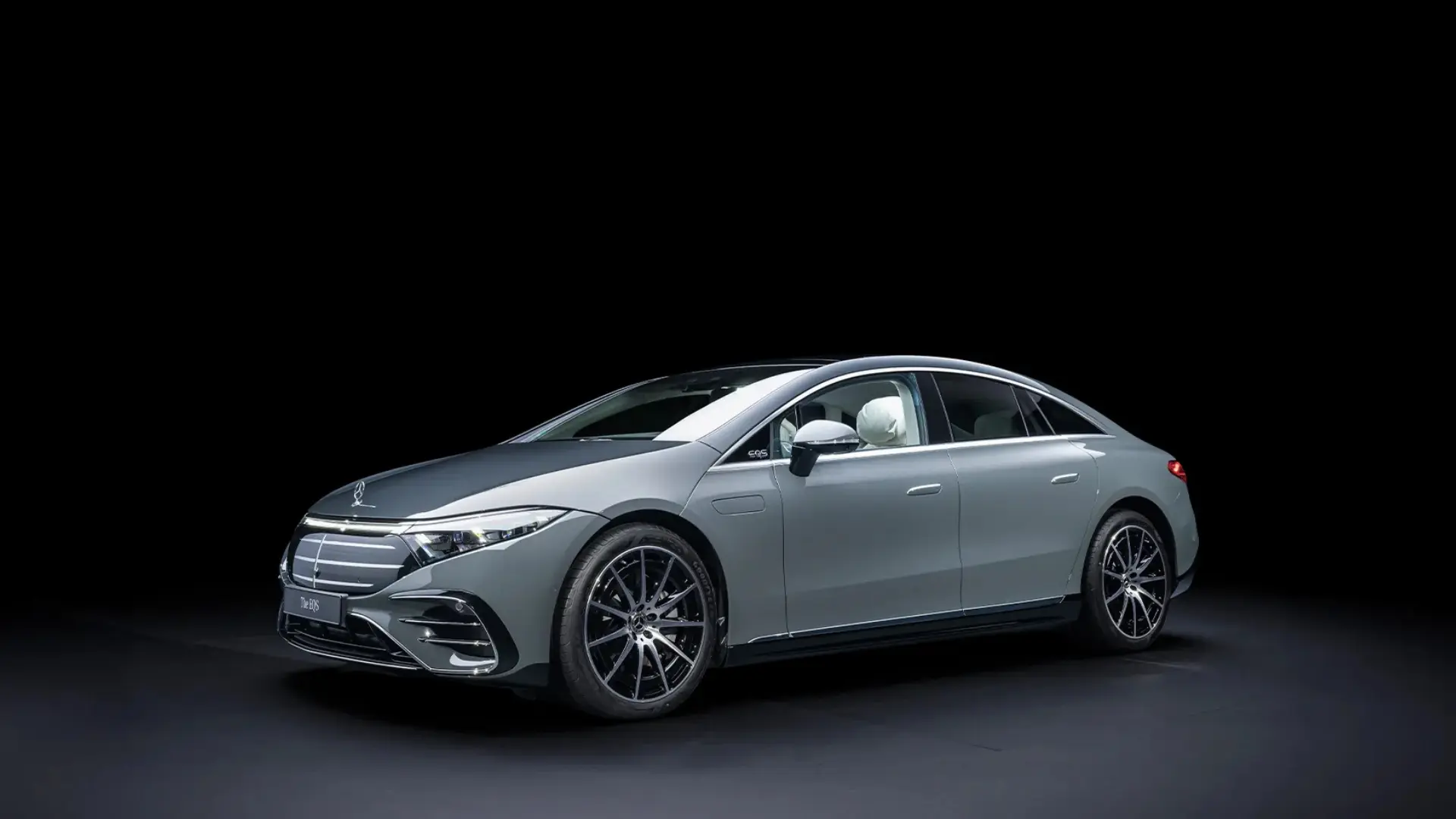
SWOT Analysis of Mercedes-Benz
- Strengths: Mercedes-Benz's strength lies in its relentless pursuit of innovation, evident in its pioneering technologies and commitment to sustainable mobility. A robust global presence, with significant market shares in key regions, contributes to the brand's resilience. The enduring brand equity associated with luxury, performance, and safety further solidifies Mercedes-Benz's position as a market leader.
- Weaknesses: High pricing; intense competition. The premium pricing strategy, while reflective of the brand's commitment to quality, can be perceived as a weakness, limiting accessibility for a broader consumer base. Intense competition in the luxury automotive segment necessitates continuous differentiation and innovation to maintain a competitive edge.
- Opportunities: The growing emphasis on electric and hybrid vehicles presents a significant opportunity for Mercedes-Benz to expand its market share. By capitalizing on its established brand reputation and investing in sustainable technologies, the brand can leverage shifting consumer preferences towards eco-friendly mobility solutions.
- Threats: Economic Downturns, Shifting Consumer Preferences: Economic downturns pose a threat to luxury automotive brands as consumer spending patterns may change. Additionally, rapid shifts in consumer preferences, influenced by factors such as cultural changes or emerging technologies, require Mercedes-Benz to stay agile and adaptive.
The success of Mercedes-Benz marketing is intricately woven into its ability to innovate, adapt, and consistently deliver vehicles that transcend transportation to become expressions of luxury and performance. The brand's resilience in the face of economic shifts, intense competition, and changing consumer preferences is a testament to its strategic acumen and commitment to customer satisfaction. As Mercedes-Benz navigates the future, the pursuit of electric and hybrid technologies positions it at the forefront of sustainable mobility. The brand's commitment to environmental responsibility, coupled with its legacy of innovation, sets the stage for continued success. However, challenges loom in the form of evolving consumer expectations, economic uncertainties, and the need for continuous differentiation in a dynamic market.
Mercedes-Benz stands not just as a luxury automotive brand but as a beacon of innovation, resilience, and timeless elegance. The journey from the historical merger of Daimler Motoren Gesellschaft and Benz & Cie to the contemporary landscape of electric mobility reflects a legacy of driving excellence that transcends generations. As the automotive industry evolves, Mercedes-Benz remains not just a witness but a driving force, steering towards a future defined by sophistication, sustainability, and unparalleled driving experiences.

